Most people today can identify the DeLorean sports car instantly without knowing its name or fascinating history, recognising the advanced machine as the co-star of the wildly popular Back To The Future movie trilogy, alongside Doc Emmet Brown and Marty McFly. However, the DeLorean was infamous before it appeared as a time-machine and became a pop culture icon, thanks to its background as one of the greatest automotive failures of all time.
The man who invented the 1960s muscle car, John Z DeLorean, left General Motors in 1973 after a stellar career, starting the DeLorean Motor Company (DMC). The logo featured a futuristic styling of the DMC name, hinting at the advanced vehicle John DeLorean intended to revolutionise the automotive world with.
In 1976 he showed the world an advanced rear-engine two-seat concept car which used a steel chassis, fibreglass body and brushed aluminium body panels. He called that prototype the DMC-12, as the as the DeLorean price would reportedly cost a staggeringly expensive $12,000.
With body design by Giorgio Guigiaro the major talking point was the car’s wild unpainted brushed-metal finish and gull-wing doors, which featured a complex opening system involving cryogenically-set torsion bars and gas struts to lift the heavy shells vertically.
After raising the required $175 million to build the car, several important changes had to be made to the prototype. A brushed stainless steel body replaced the aluminium skin, and Colin Chapman’s Lotus Cars was brought in to develop a new chassis and suspension architecture.
Using a double-Y-format chassis similar to a Lotus Esprit the DeLorean also featured fully independent suspension with double-wishbone format in front and multi-link IRS used out back. Staggered cast alloy wheels measured 14x6in up front, with 15x8in out back and power disc brakes all ‘round.
Power was delivered by a 2.85-litre V6 developed by Peugeot, Renault and Volvo, and called the PRV ZMJ-159, which came in for significant criticism due to lacklustre specs. With only 100kW in a 1230kg car, a manual DMC DeLorean could only manage the 0-100km/h sprint in a fairly tardy 8.8 seconds, which was approximately 1.5 seconds off other cars in its price range.
.jpg)
Cars optioned with the three-speed automatic were slower again, recording high-9-second times, while the fastest DeLoreans would only reach a top speed of 177km/h. While there were plans to sell turbocharged versions of the car that would have significantly improved performance figures, this was never realised.
To build the advanced sports coupe the British government paid approximately £100 million in incentives to have DeLorean build a construction plant in Dunmurry, a suburb in Belfast, Northern Ireland. Engineering problems and budget issues held the DeLorean’s debut back until early 1981, while the car was beset with quality control problems from the mostly inexperienced Irish workforce. However, they eventually built approximately 9200 cars during the 21 months the factory was open.
Although the original design concept had a target price of $12,000, the DMC DeLorean appeared on the market with an RRP of over $25,000, rising to $34,000 in 1983. After DMC went bankrupt in 1983 used vehicles proved nearly impossible to sell at any price.
.jpg)
DMC’s problems were compounded when John Z DeLorean was arrested for drug trafficking by the FBI in October 1982, a charge he was later acquitted of. The British government seized the Northern Ireland plant, and the DeLorean car company was liquidated consigning the name DeLorean to a shameful place in history as another “couldabeen”…
Until Hollywood director Robert Zemeckis needed a futuristic-looking vehicle to build into a time machine for his 1985 science fiction movie Back To The Future. Six prop cars were built to be used across the three smash-hit movies, with the DMC two-door becoming one of the most recognisable and beloved cars in Hollywood history, to the point that more than 85 movie replicas of the Back To The Future DeLorean have been built.
Thanks to its stature as a pop culture icon, as well as its infamous place in the automotive lexicon, the value of DeLorean cars are climbing, with up to $100,000 required to purchase a very clean and tidy example. Because they were never sold new in Australia, and only 16 right-hand drive examples were built, it can be rare to find one for sale, and regular DMC cars can’t travel through time like Doc Brown’s DeLorean time machine.
.jpg)
For those who would want a brand new DeLorean keep an eye on DMC Texas as the American company formally announced plans to build turn-key cars back in July 2007. Originally DMC Texas wasn’t building brand new vehicles from scratch, but was refurbishing existing DeLoreans that retained their original VIN.
An electric version was shown by DMC Texas in October 2011 but has not yet been made available to purchase. In 2017 DMC Texas announced they would build turn-key replica DeLoreans for an estimated price of over $140,000 per-car. Although production was due to start in January 2019 no cars have been built, and you’ll have to supply your own flux capacitor if you want to visit Hill Dale in 1885.
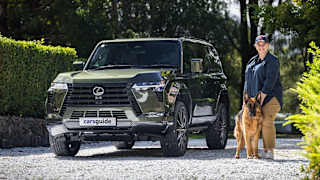
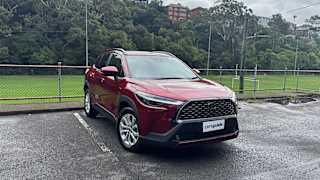



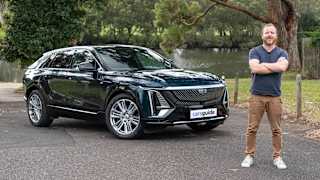
.jpg)
.jpg)

.jpg)
.jpg)

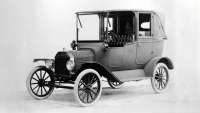
.jpg)

.jpg)
.jpg)

.jpg)

.jpg)

.jpg)
.jpg)
.jpg)
.jpg)
.jpg)
.jpg)
.jpg)
.jpg)
.jpg)
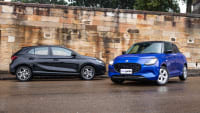

.jpg)

